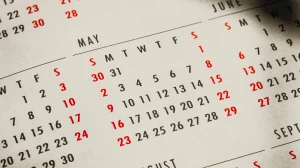Five years ago, the Sister was 5 times the Brother's age. Their current ages sum to 34. What will the Brother's age be in 6 years?
by
Updated Jul 22, 2024

Five years ago, the Sister was 5 times the Brother's age. Their current ages sum to 34. What will the Brother's age be in 6 years?
To solve the problem of finding the age of the brother after 6 years given the conditions, follow these steps.
Let x be the present age of the sister.
Let y be the present age of the brother.
According to the problem, the sum of their present ages is 34 years. This gives us the equation:
x + y = 34
Five years ago, the sister’s age was 5 times the brother’s age.
x − 5 = 5 x (y − 5)
x − 5 = 5y − 25
x − 5y = − 20
From the sum of ages equation, solve for x
x = 34 − y
Substitute x from the above into the rearranged age relationship equation
(34 − y) − 5y = − 20
34 − 6y = − 20
− 6y = − 54
y = 9
The brother’s current age is y = 9 years
To find his age after 6 years, add 6 to his current age
9 + 6 = 15
Therefore, the brother will be 15 years old after 6 years.
Solving Age Problems using Algebraic Equations
Age problems are a classic application of algebra in mathematics. These problems often involve setting up and solving equations to find the current or future ages of individuals based on given conditions.
Define Variables:
Begin by defining variables to represent the ages of individuals. For example, let x be the present age of one person and y be the present age of another.
Set Up Equations:
Use the given information to set up equations. This usually involves creating equations based on the sum of their current ages, their ages a certain number of years ago, or relationships between their ages at different times.
Use Historical Information:
For problems involving changes over time, incorporate the historical data. For example, if an age problem states that a person's age was a certain multiple of another's age a few years ago, create an equation representing that relationship.
Solve the Equations:
Substitute known values and solve the equations to find the unknown ages. This might involve simplifying equations, combining them, or using methods like substitution or elimination.
Calculate Future Ages:
Once the current ages are determined, calculate future ages by adding the number of years into the future to the current ages.
Verify the Solution:
After finding the solution, check it by plugging the values back into the original conditions to ensure they satisfy all given relationships.
Applications
Age problems are useful in real-life scenarios such as planning and forecasting. They help in understanding relationships and changes over time, which can be applied in various contexts like financial planning or project management.




